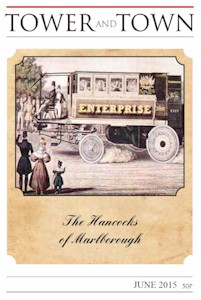

Tower and Town, June 2015 (view the full edition) (view the full edition)Clench Common MicrolightingClench Common Airfield was originally given outline planning for Microlight use in the mid 1980s, and was one of the first registered Microlight Airfields in the UK. It had previously been an airfield (called Overton Heath and a satellite to Upavon) during the Second World War, operating twin engine Airspeed Oxford trainers. It has been a full time microlight training operation since the mid 80's, with more than 700 students taught to fly to microlight licence standard. Graham Slater (G S Aviation) has managed the airfield since 1991, Graham established a flight training base for both Flex wing and Fixed Wing microlight aircraft. Flex Wings look like big hang gliders with a trike underneath; Fixed Wings look like normal aeroplanes. They have evolved over time and now cruise at 70 to 80 knots (70 to 90 mph) sipping fuel at an average of 12 litres an hour. They use a four stroke engine of 1200 cc and are economic, quiet and environmentally friendly. They are comfortable (even having a cabin heater), so it is possible to fly to France in two hours from Marlborough. In fact we often organise Club fly-outs to Abbeville in France with an overnight stop incorporating a good dinner and a few glasses of fine French wine. We have sixty eight club members based at Clench Common, with about twelve aircraft of different types, and we teach about thirty to forty people to licence standard every year, with four full time instructors. Our instructors are fully qualified through the CAA and British Microlight Association instructor scheme, and have amassed thousands of training hours during their careers. Our latest achievement is to be chosen by Marlborough College to offer a summer school flying course, and to have been selected by Dauntsey's School to teach children from 14 to 17 years of age to the full licence as part of the Dauntsey's School curriculum! We believe this is the first time a Microlight Training Operation has done this. So the flying history of a local rural airfield continues, tucked away on the Wessex downland. Graham Slater |